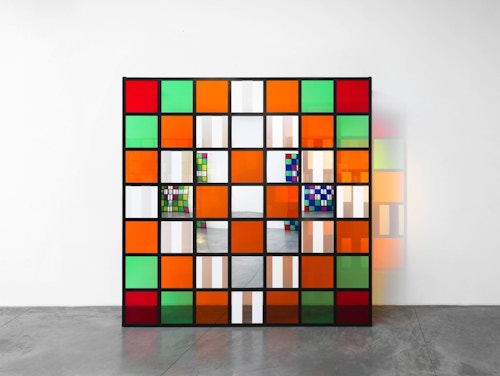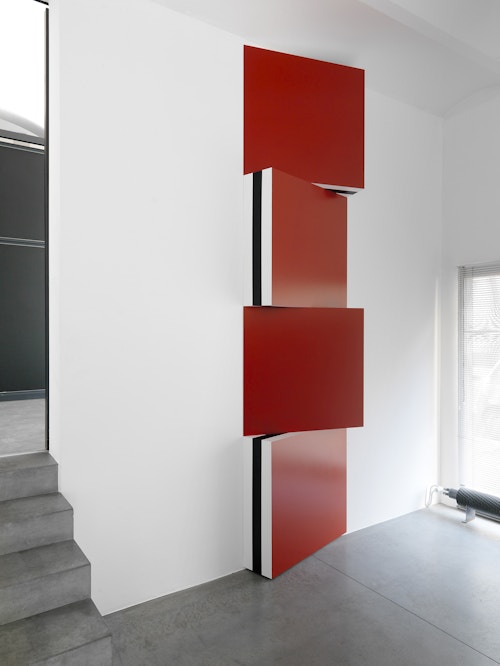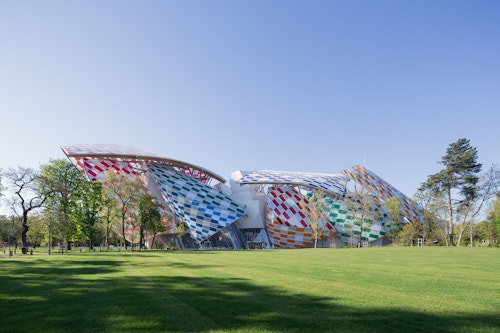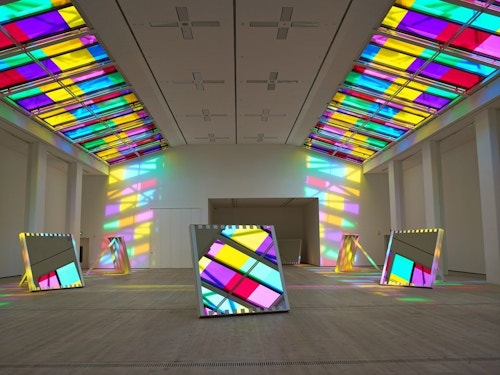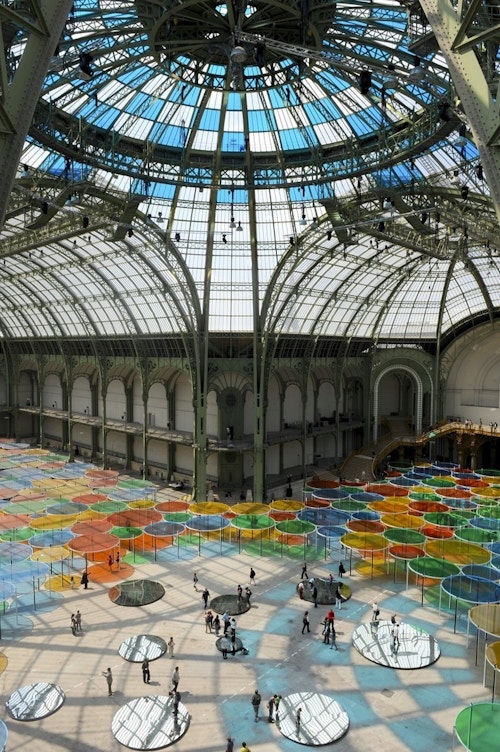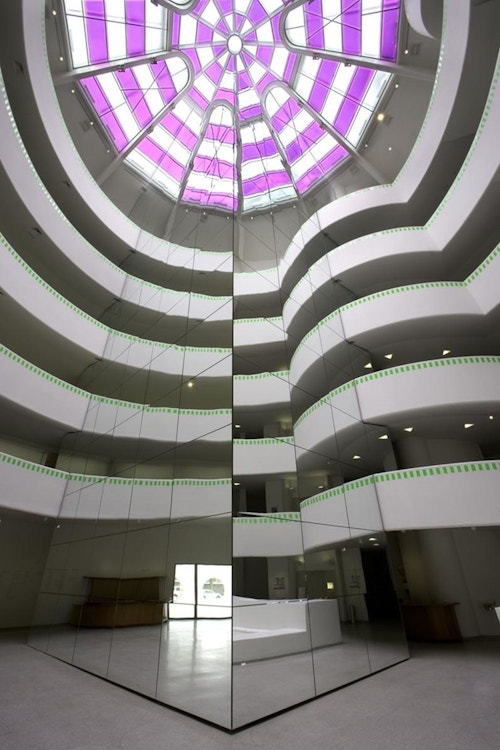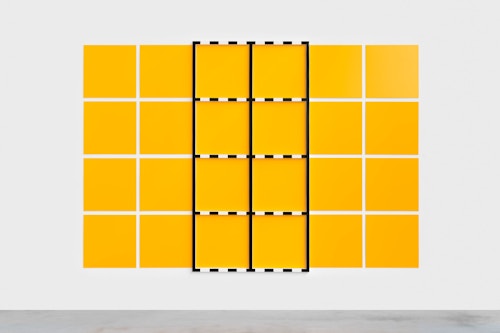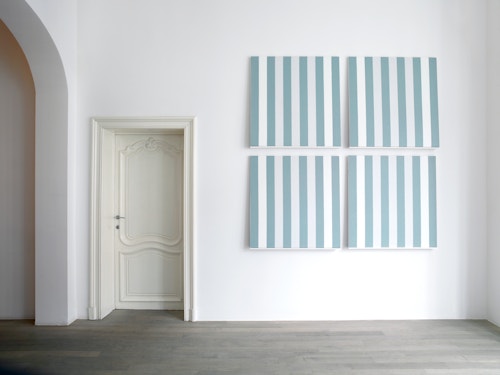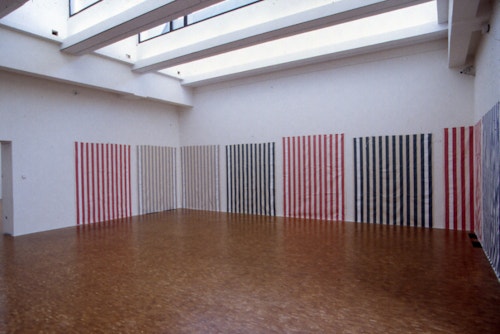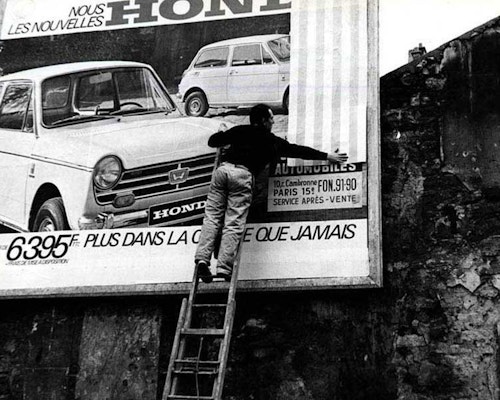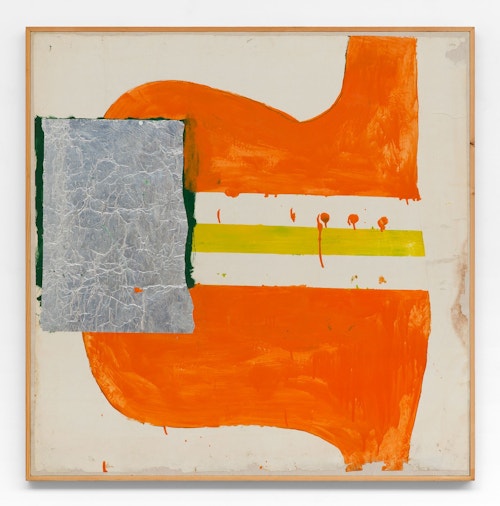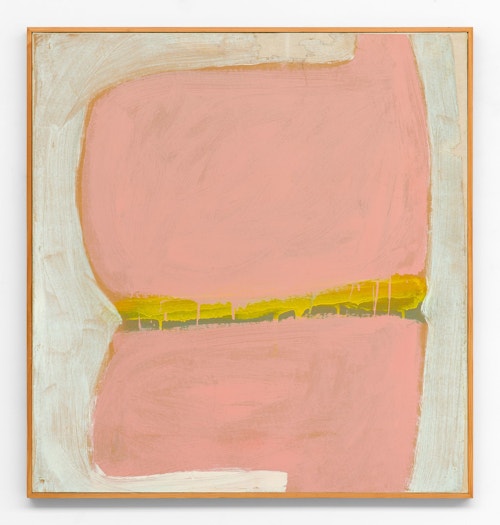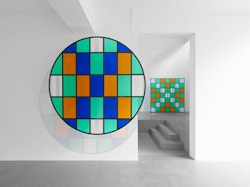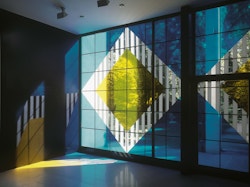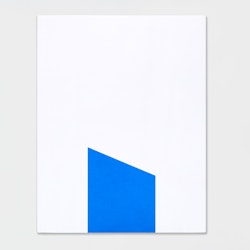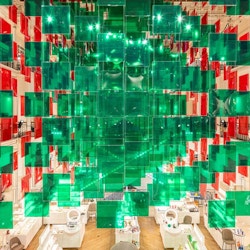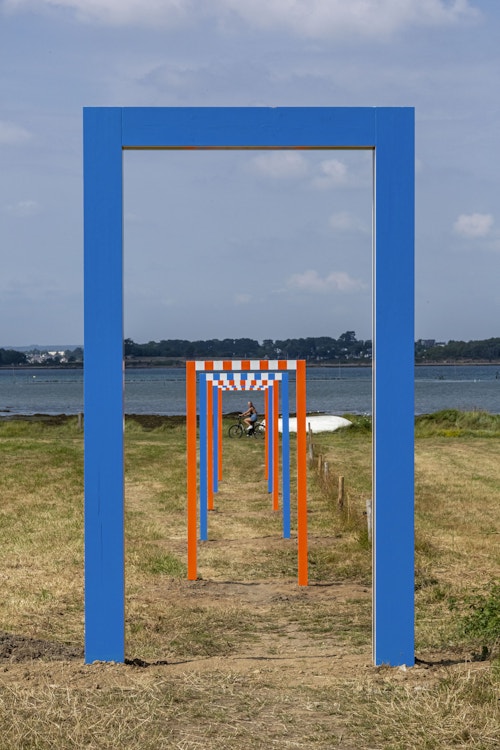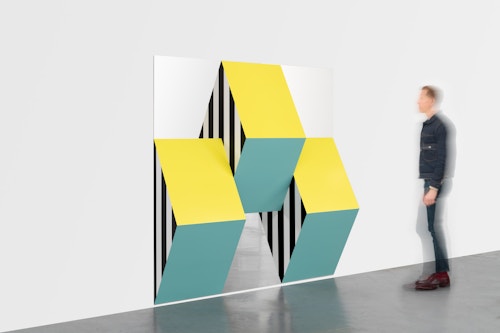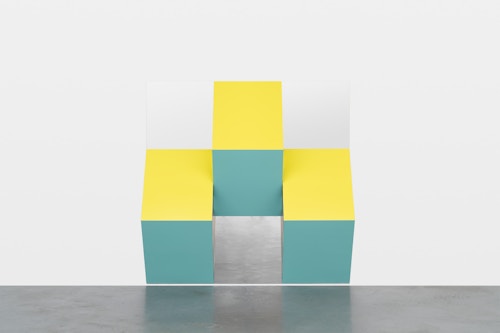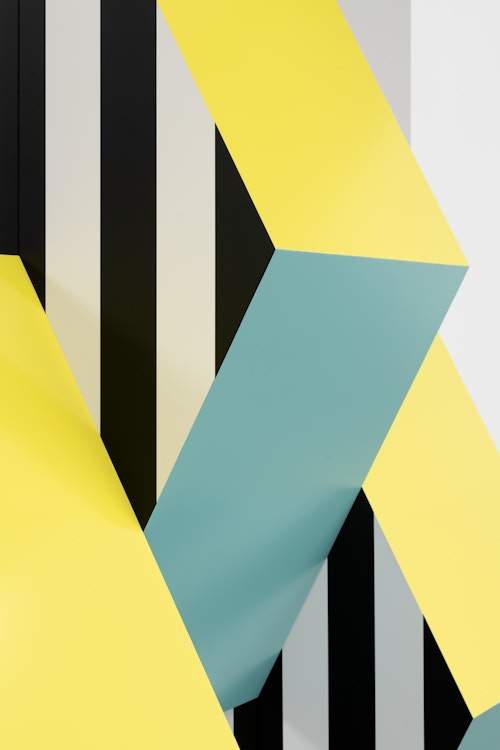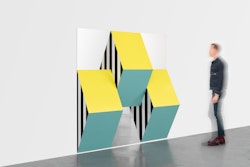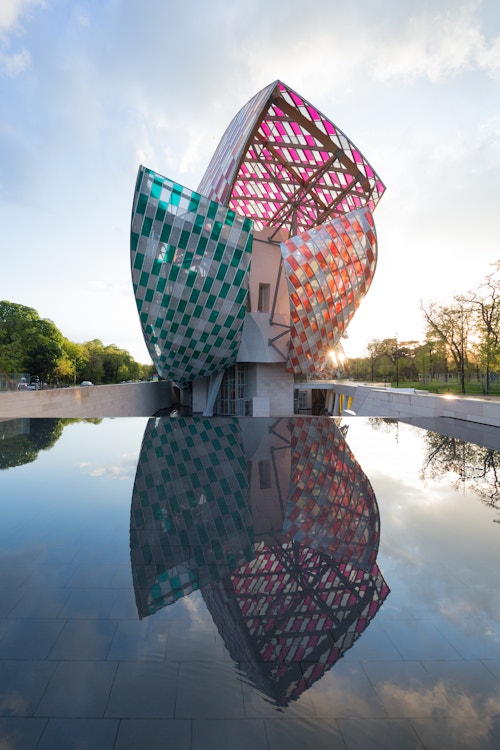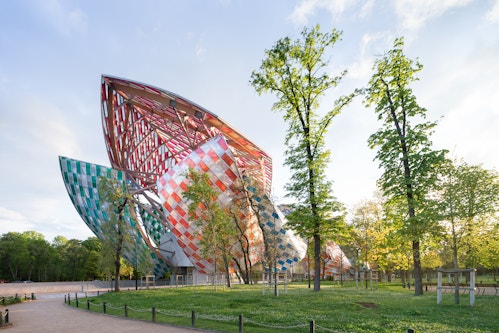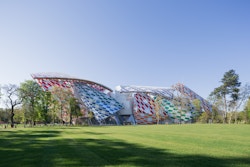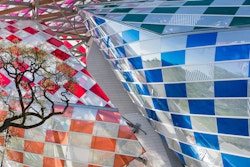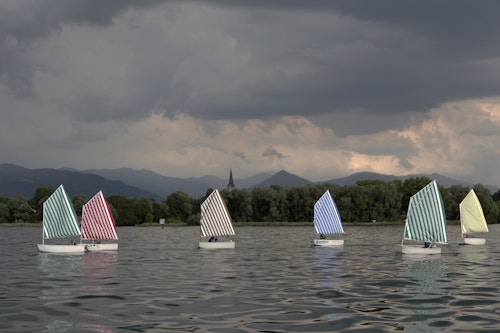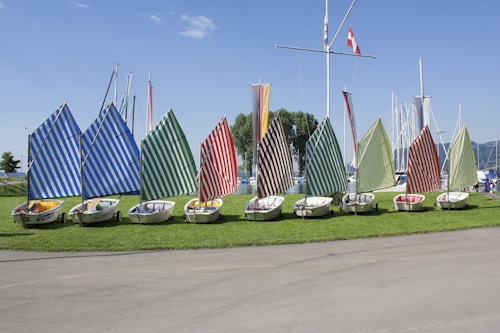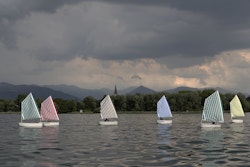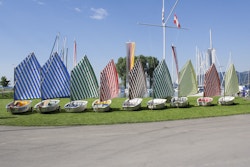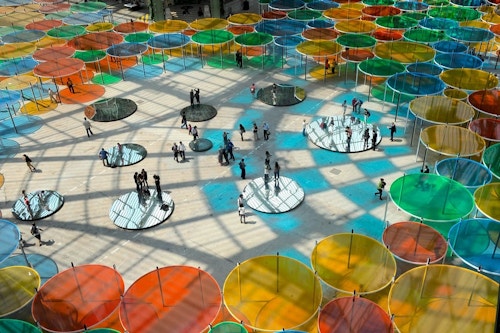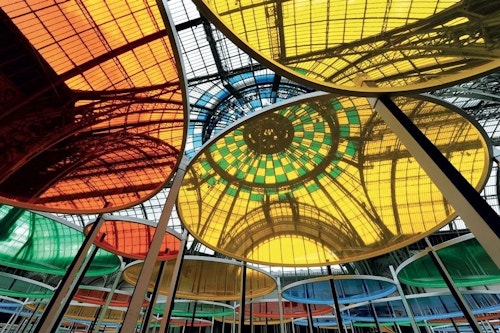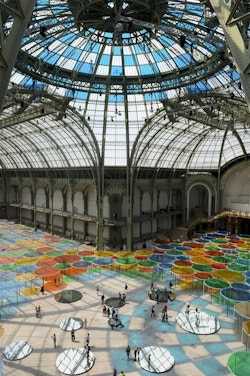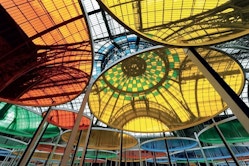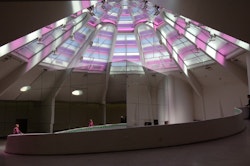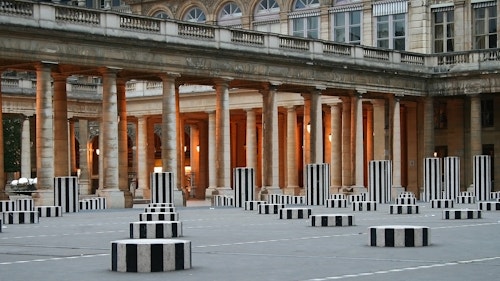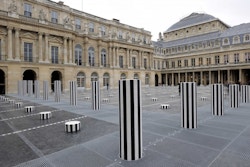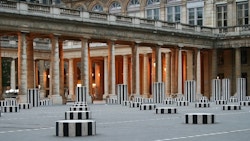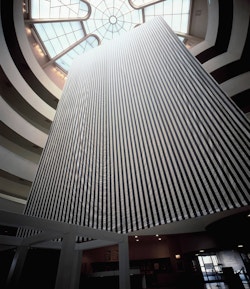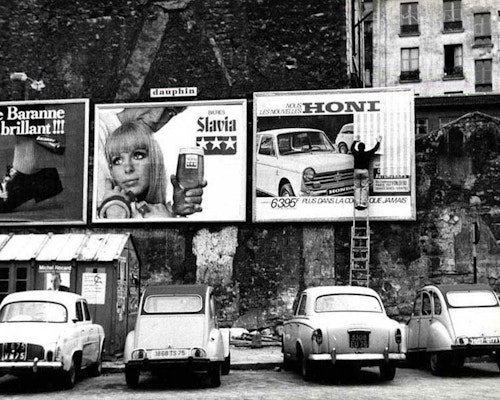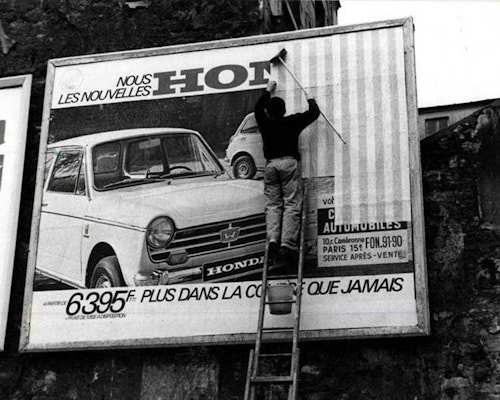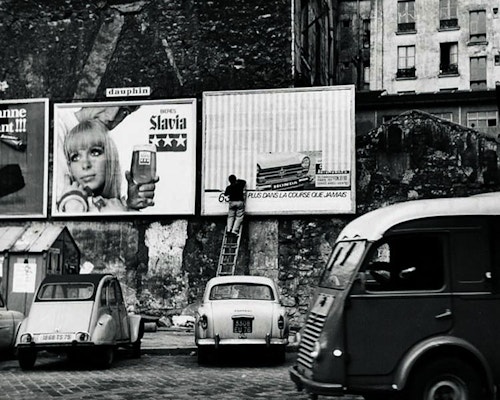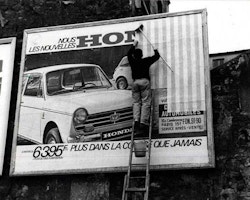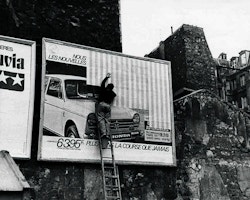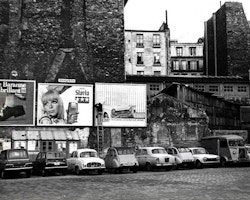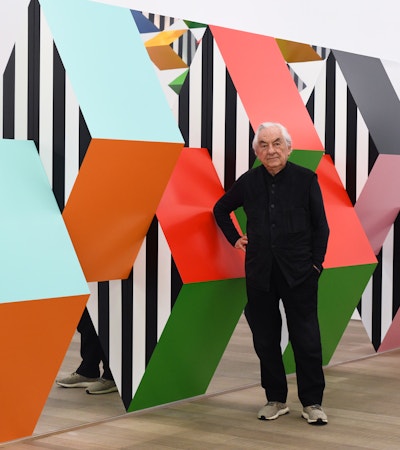
Daniel Buren
Daniel Buren is a world-renowned French artist whose work lies at the crossroads of sculpture, installation and painting, as well as action and intervention. He came to fame in Paris with the B.M.P.T. group (the initials of Buren, Mosset, Parmentier and Toroni) in 1966-67 and continued to develop a critique of the art establishment. Buren appropriated a standard format fabric motif of 8.75 cm-wide vertical stripes (which alternate between white and a colour) as a visual instrument, or sign, to ‘expose’. He works on site, or in situ, in relation to the setting, a specific building or public site, its history and the particular circumstances surrounding the work’s production. Two examples that caused heated debate were Peinture-Sculpture at the Guggenheim Museum in New York (1971) and the public commission Les Deux Plateaux (1986) at the Palais Royal in Paris. Throughout his career, he has documented all these events and grouped the images under the title Photo-souvenirs. Since the 1990s, his work has become increasingly architectural using fencing or grids, and stained glass window structures, such as his installation for Monumenta at the Grand Palais in Paris (2012). Buren’s first exhibition with Xavier Hufkens dates back to 2005, marking the beginning of a long-term collaboration that has continued for over two decades.
Daniel Buren (b. 1938, Boulogne-Billancourt, France) lives and works in situ. He represented France at the Venice Biennale in 1986. Several volumes of his catalogue raisonné have already been published.





